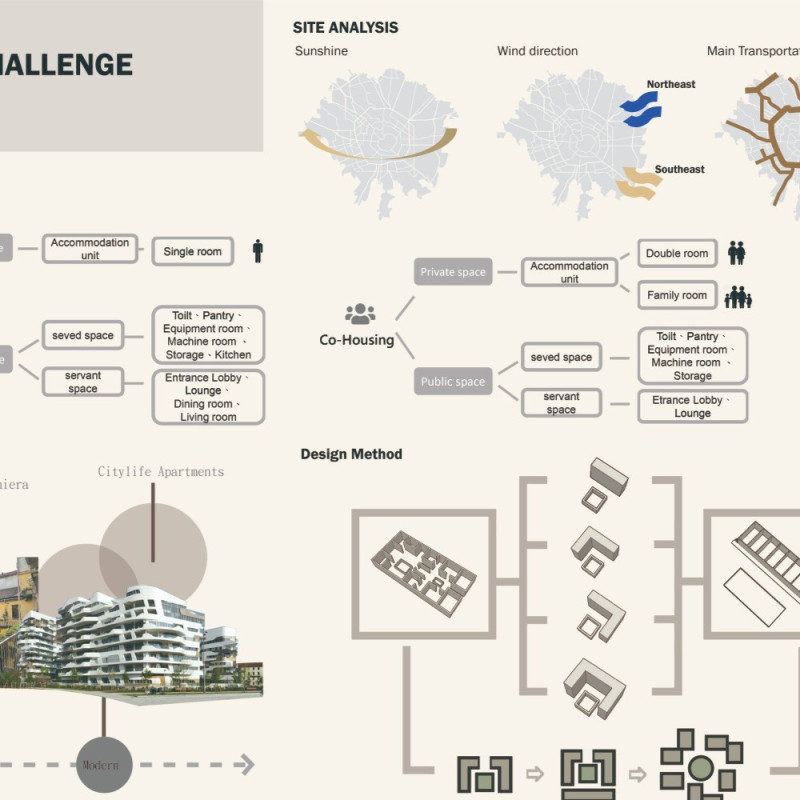5 key facts about this project
Sustainability is a core principle in the architectural design, incorporating materials and techniques that reduce environmental impact. The project utilizes reused brick, sustainable wood, recycled metal, photovoltaic panels, and green roof systems. These materials not only contribute to energy efficiency but also create a cohesive aesthetic that aligns with both modern and traditional architectural styles found in Milan.
Community-Centric Design Approach
A defining feature of this project is its community-centric design approach. The layout promotes shared spaces, including lounges, service areas, and outdoor communal gardens, encouraging resident interaction. This strategy is essential in urban settings, where isolation can be prevalent. By facilitating connections among residents, the design helps build a sense of belonging and community.
The architectural plan employs a modular configuration, allowing flexibility in living arrangements. This adaptability is important for accommodating diverse family sizes and changing demographic needs. Elements such as large windows ensure natural light permeates living spaces, contributing to a healthier indoor environment.
Sustainable Features and Innovative Practices
The project uniquely integrates sustainable features that address urban living challenges. The inclusion of rainwater harvesting systems demonstrates a commitment to responsible resource management, while the photovoltaic panels highlight a focus on renewable energy. These systems not only reduce reliance on non-renewable resources but also lower utility costs for residents.
Additionally, the use of vertical gardens enhances biodiversity and improves air quality, contributing to overall urban wellness. This approach aligns well with recent trends in architecture that prioritize ecological health alongside aesthetic and functional considerations.
In summary, this architectural design project offers a thoughtful and pragmatic solution to urban housing challenges. By prioritizing community engagement and sustainability, it sets a standard for future housing developments. Readers are encouraged to explore the project presentation to gain a deeper understanding of the architectural plans, sections, designs, and innovative ideas that define this initiative.























